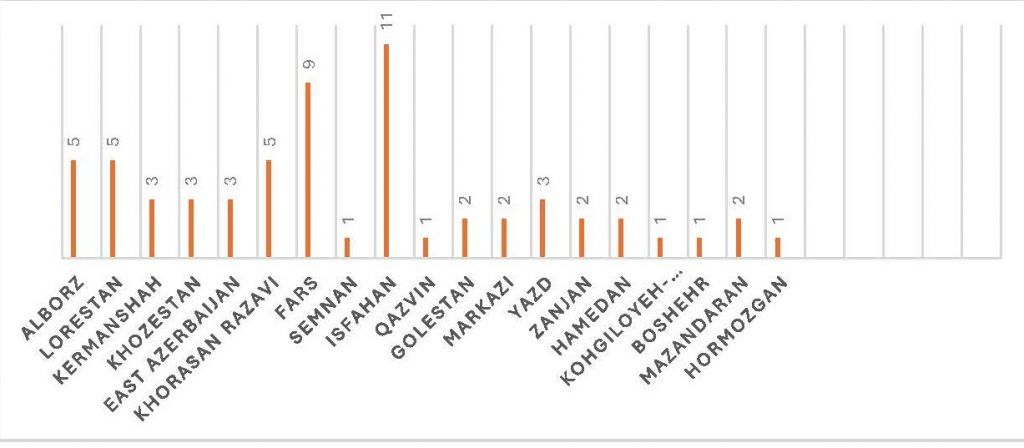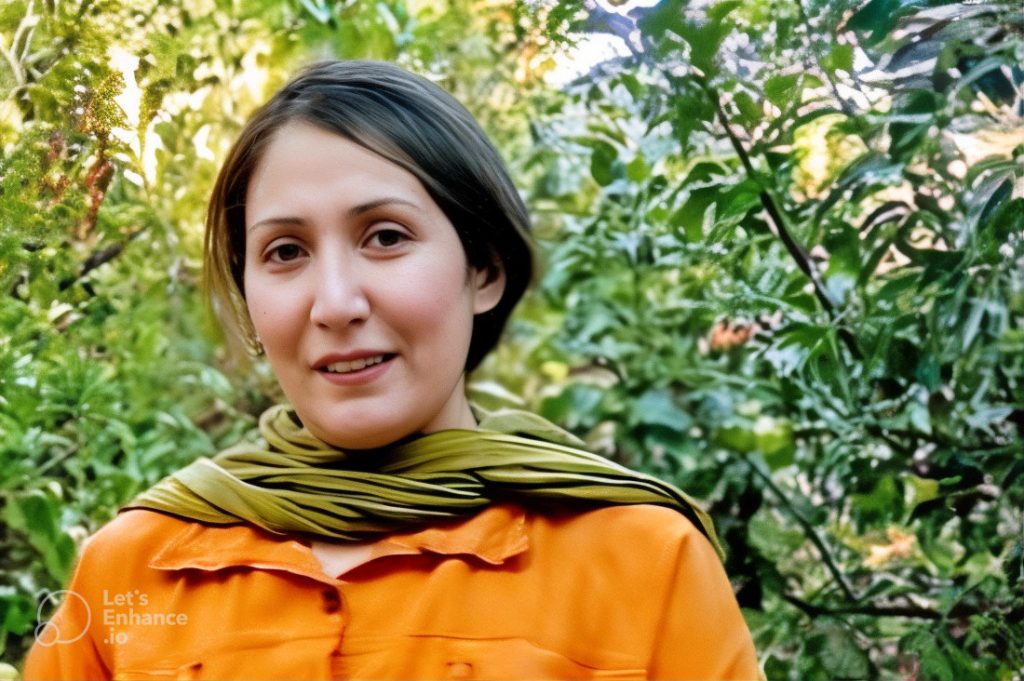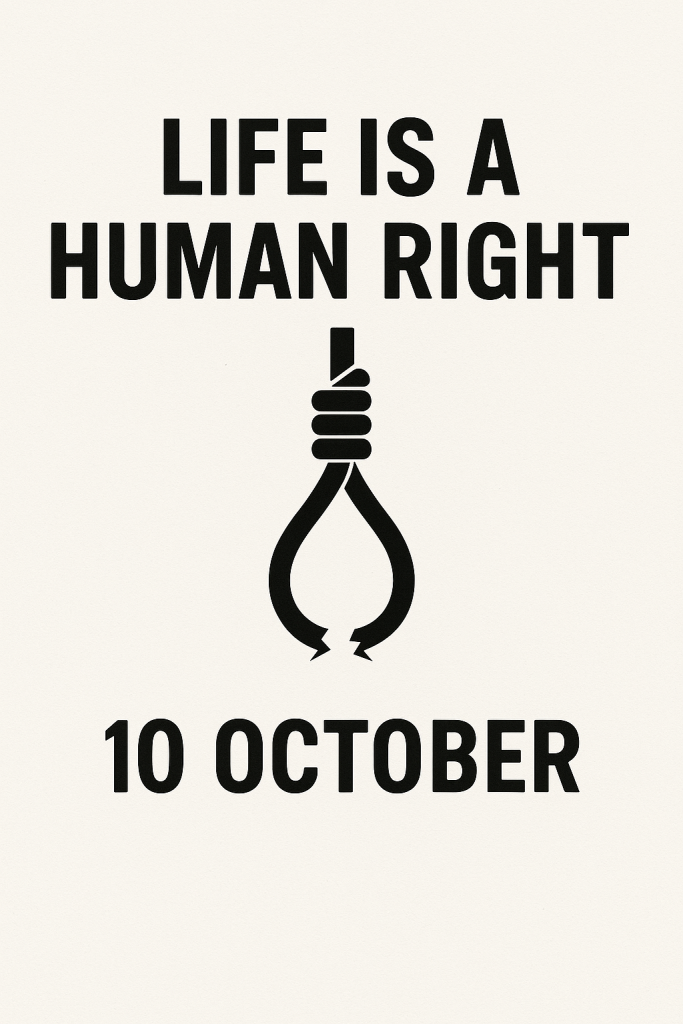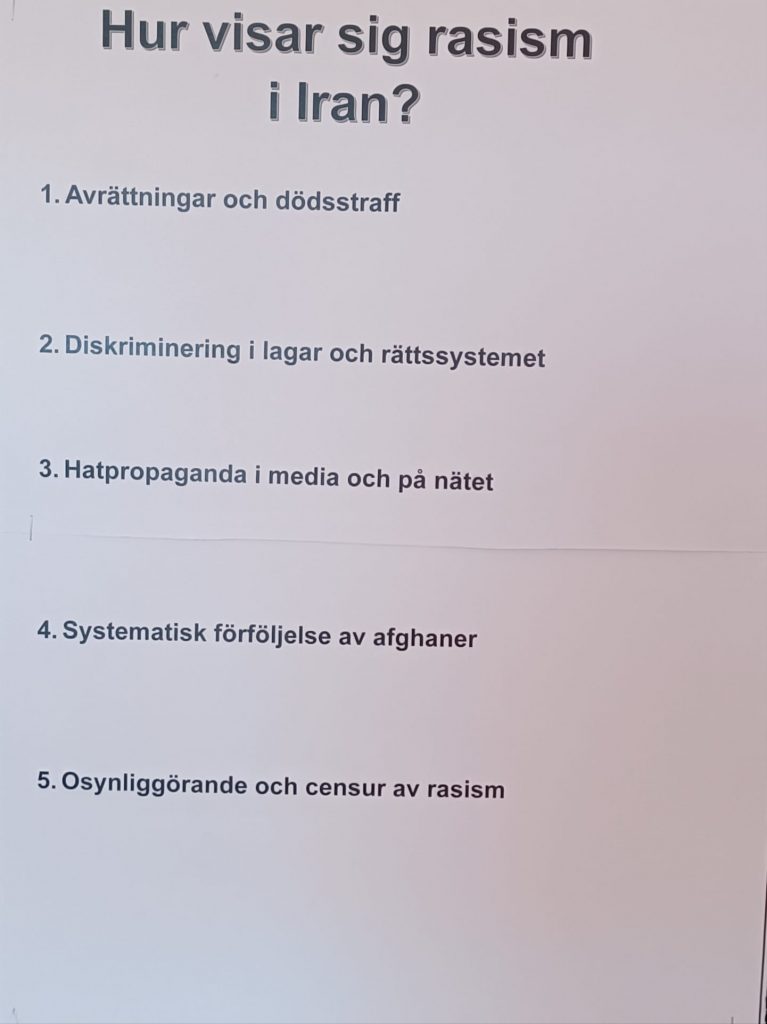1. Introduction
Coinciding with the 45th anniversary of the Islamic Revolution in Bahman 1403, at least 62 executions were carried out across 19 provinces in Iran. According to reports from human rights organizations and independent investigations presented to the United Nations in January 2025 during the fourth cycle of the Universal Periodic Review (UPR) of the Islamic Republic of Iran, a minimum of 2,311 individuals were executed between 2019 and 2024. This data indicates that executions have increased by approximately 43% compared to 2022.
The report highlights that a significant portion of these executions are related to drug-related offenses. Additionally, Iran’s judiciary widely employs the death penalty in cases of homicide, political charges, and blasphemy-related accusations.
Moreover, the report confirms that ethnic minorities, including Kurds, Baluchis, and Arabs, are disproportionately targeted for execution, particularly in drug-related cases. Research shows that individuals from these groups often face unfair trials, are denied access to independent legal representation, and are subjected to torture and violence to extract forced confessions.
Iran’s discriminatory legal system has turned the death penalty into a tool for controlling provinces with large ethnic minority populations. Many executions in these provinces are carried out without public disclosure, making it difficult to verify the actual number of victims.
Furthermore, Iran continues to execute individuals who were under 18 years old at the time of their alleged crimes, despite the country’s international obligations prohibiting such executions.
State-run media frequently broadcast forced confessions, presenting them as evidence to justify death sentences. These confessions are often obtained under torture and duress and used in trials that fail to meet the minimum standards of fair judicial proceedings.
2. Objective of the Report
The purpose of this report is to provide a detailed and documented account of the executions in Iran during Bahman 1403. By relying on data collected by human rights organizations, official news sources, and independent investigations, the report aims to analyze the implementation of death sentences, their underlying causes, geographical distribution, and the profiles of the victims. Additionally, this report examines legal inequalities, violations of fair trial principles, and the social and legal consequences of capital punishment, emphasizing the urgent need for international attention and intervention.
3. Report Content
Based on the identities and crimes of those executed in Bahman 1403 (January 20 – February 18, 2025), the total number of executions during this month reached at least 62. This figure represents a 31.8% decrease compared to the previous month (Dey 1403).
It is important to note that only a limited number of these executions have been officially confirmed by Iranian state media or judiciary officials. The majority of cases have been documented and reported through investigations conducted by human rights organizations and activists.
The lack of transparency, political restrictions, and social pressures on human rights activists and organizations has made it extremely challenging to obtain accurate and timely statistics on executions. Tracking the exact number and identities of those executed is particularly difficult due to the limited access to reliable information.
Additionally, this environment imposes extra pressure on human rights organizations, as they must continue to provide precise and up-to-date statistics despite facing numerous restrictions and threats. In many cases, information regarding executions is delayed, censored, or lacks sufficient accuracy, making documentation even more difficult.
Based on the available data, this section examines the geographical and demographic distribution of executions and the reasons for the death sentences carried out in Bahman 1403.
3.1. Geographical and Demographic Distribution
Executions were carried out in 19 provinces across 25 different prisons in various cities throughout Iran.
Isfahan Province recorded the highest number of executions, with 11 individuals executed in Dastgerd Prison.
Fars Province ranked second, with 9 executions in Adelabad Prison.
Khorasan Razavi, Alborz, and Lorestan Provinces each recorded 5 executions, making them the third-highest regions in execution numbers.

- Executions of Women
Among the 62 individuals executed during Bahman 1403 (January 20 – February 18, 2025), at least 3 women were hanged in various prisons across Iran. All three women were convicted of homicide and executed under Qisas (retribution law). However, detailed information regarding their cases remains limited, as Iranian judicial authorities have not provided official or transparent reports on their executions.
- Executions of Foreign Nationals
According to available data, 4 of the executed individuals were Afghan nationals. They were convicted of homicide and drug-related offenses and were executed in various prisons across Iran.
- Average Age of Those Executed
The average age of the individuals executed in Bahman 1403 ranged between 26 and 49 years. However, due to limited access to information, precise age statistics for all victims remain unavailable.
- Marital Status of Victims
Data regarding the marital status of those executed is limited. Among the 62 individuals executed, information on marital status and the number of children is available for only 11 cases. Based on the documented information, at least 16 children lost one of their parents due to these executions.
4. Reasons for Executions
Data indicates that executions in Bahman 1403 (January 20 – February 18, 2025) were carried out for four different reasons: Drug-related offenses, Homicide (Qisas – Retribution Law), Rape and Armed robbery.

Breakdown of Executions by Charges
- Drug-related offenses: Approximately 30 individuals were executed for drug-related crimes, making up the largest category of executions. This accounts for 48.3% of all executions in Bahman 1403. Despite international recommendations to reduce or abolish the death penalty for drug-related offenses, Iran continues to enforce capital punishment in such cases.
- Homicide (Qisas): A total of 28 individuals were executed for murder charges, accounting for 45.1% of all executions in Bahman 1403. The number of executions for homicide has increased significantly in recent months compared to previous years. This trend may be attributed to stricter judicial policies or a rise in violent crimes.
Additionally, a prisoner named Saeed Joukar was executed on February 16, 2025 (28 Bahman 1403) in Adelabad Prison, Fars Province. However, the exact reason for his execution remains unknown, and no further details are currently available.
5. Confirmation of Death Sentences: The Case of Sharifeh Mohammadi

Precise information on the number of confirmed death sentences issued in Bahman 1403 (January 20 – February 18, 2025) is unavailable. This lack of transparency is likely due to the opacity of Iran’s judicial system and restricted access to legal data.
One of the most significant cases in Bahman 1403 was the reissuance of the death sentence for Sharifeh Mohammadi.
Sharifeh Mohammadi, a labor activist and former member of the Coordinating Committee for the Establishment of Labor Unions, was arrested on December 5, 2023 (14 Azar 1402) at her home by security forces. Following her arrest, she was transferred to Lakan Prison in Rasht. In July 2024 (Tir 1403), the First Branch of the Revolutionary Court of Rasht, presided over by Judge Ahmad Darvish-Goftar, sentenced her to death on charges of “Baghy” (armed rebellion) through membership in an opposition group.
In October 2024 (Mehr 1403), the Supreme Court overturned the ruling, referring the case for retrial to the Second Branch of the Revolutionary Court of Rasht. However, in February 2025 (Bahman 1403), the Second Branch of the Revolutionary Court, now presided over by Judge Mohammad Ali Darvish-Goftar (the son of the previous judge), reissued the death sentence against Sharifeh Mohammadi.
Both father and son, Ahmad and Mohammad Ali Darvish-Goftar, have a long history of human rights violations and issuing execution sentences against political prisoners. These judges are notorious in Gilan Province for their harsh treatment of detainees and psychological pressure on prisoners.
This case exemplifies a violation of judicial impartiality, as the involvement of the same family members in different stages of the case suggests a direct influence of personal relationships on the legal process, further undermining the fairness and integrity of the judiciary.
6. Conclusion
The executions carried out in Bahman 1403 (January 20 – February 18, 2025), coinciding with the 45th anniversary of the Islamic Revolution, demonstrate the continued widespread use of the death penalty in Iran. Based on available data, at least 62 people were executed across 19 provinces this month, with the majority of cases related to drug-related offenses and homicide. This trend indicates that the Islamic Republic continues to use executions as a tool for repression and social control.
The findings of this report highlight that ethnic minorities, particularly Kurds, Baluchis, and Arabs, are disproportionately targeted by death sentences, especially in drug-related cases. Alongside the lack of fair trials and numerous reports of torture and forced confessions, this pattern reflects a systematic policy of discrimination, leading to an increase in the number of victims from these communities.
The execution of individuals convicted of crimes committed under the age of 18 continues in Iran, despite the country’s clear international obligations prohibiting such executions. Additionally, the state-run media’s frequent broadcasting of forced confessions and the judiciary’s lack of transparency play a significant role in justifying and legitimizing these sentences.
One of the most significant cases this month was the reaffirmation of the death sentence against labor activist Sharifeh Mohammadi. Her conviction was issued in a judicial process that blatantly violated principles of impartiality and fairness, involving judges with a history of human rights violations. This case serves as a clear example of how Iran’s judiciary is used to suppress political opposition.
With a 43% increase in executions compared to 2022, this worrying trend continues to escalate. The international community, human rights organizations, and advocacy groups must take action to address this crisis. Stronger measures are needed to halt the instrumental use of capital punishment and ensure fair judicial processes. Ending the political use of the death penalty and securing fundamental human rights protections are essential steps toward preserving human dignity and preventing further human rights violations in Iran.


